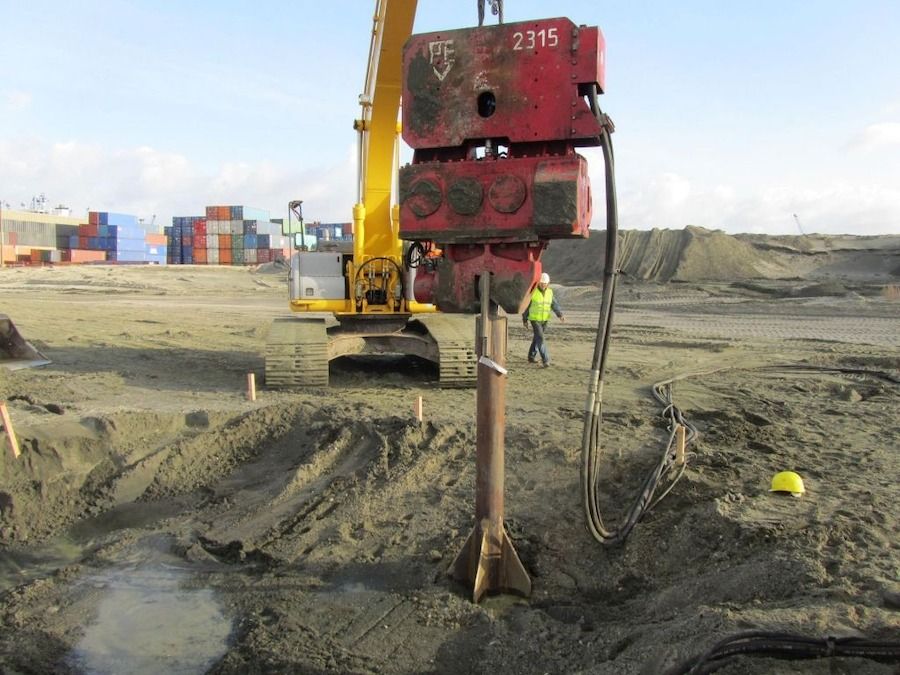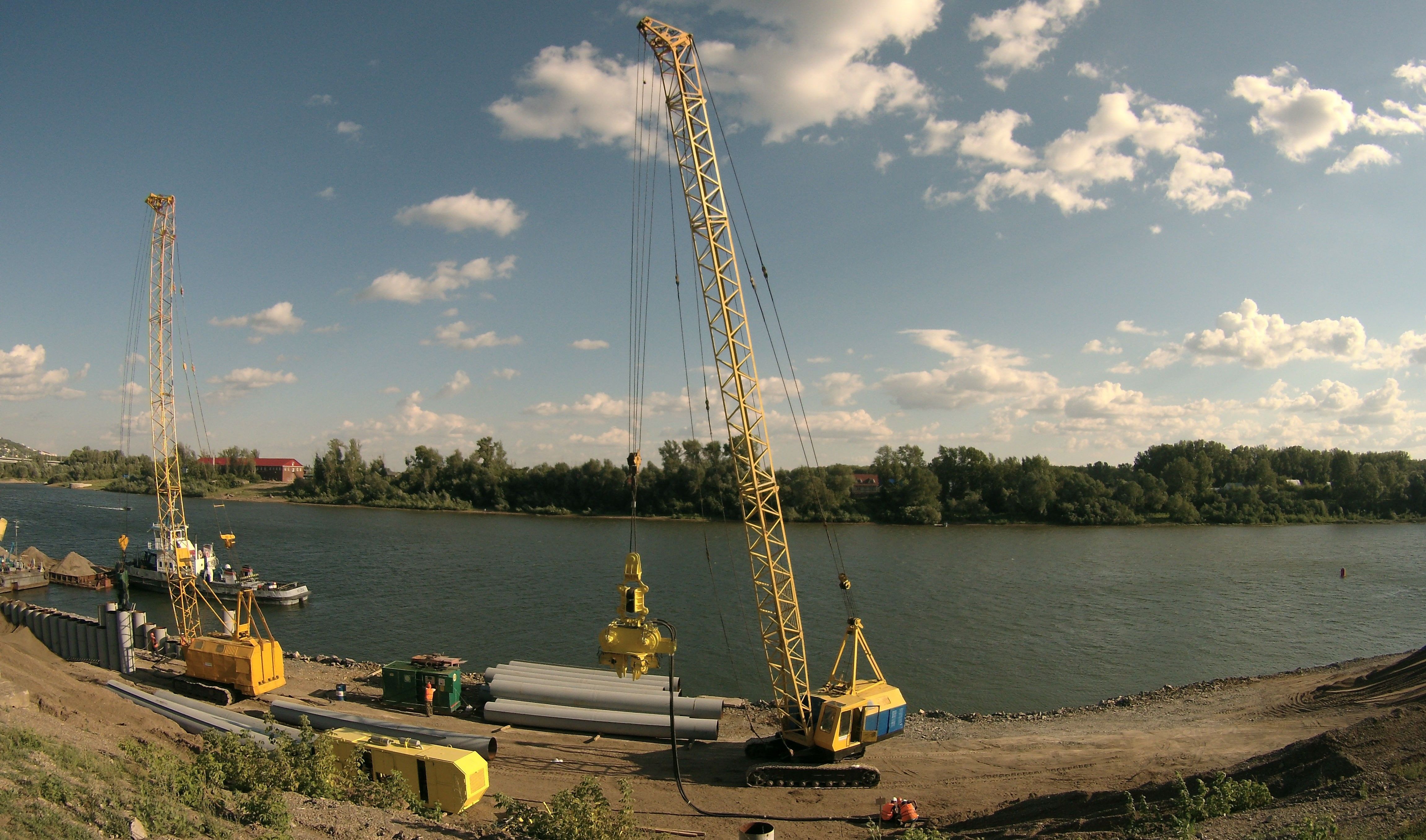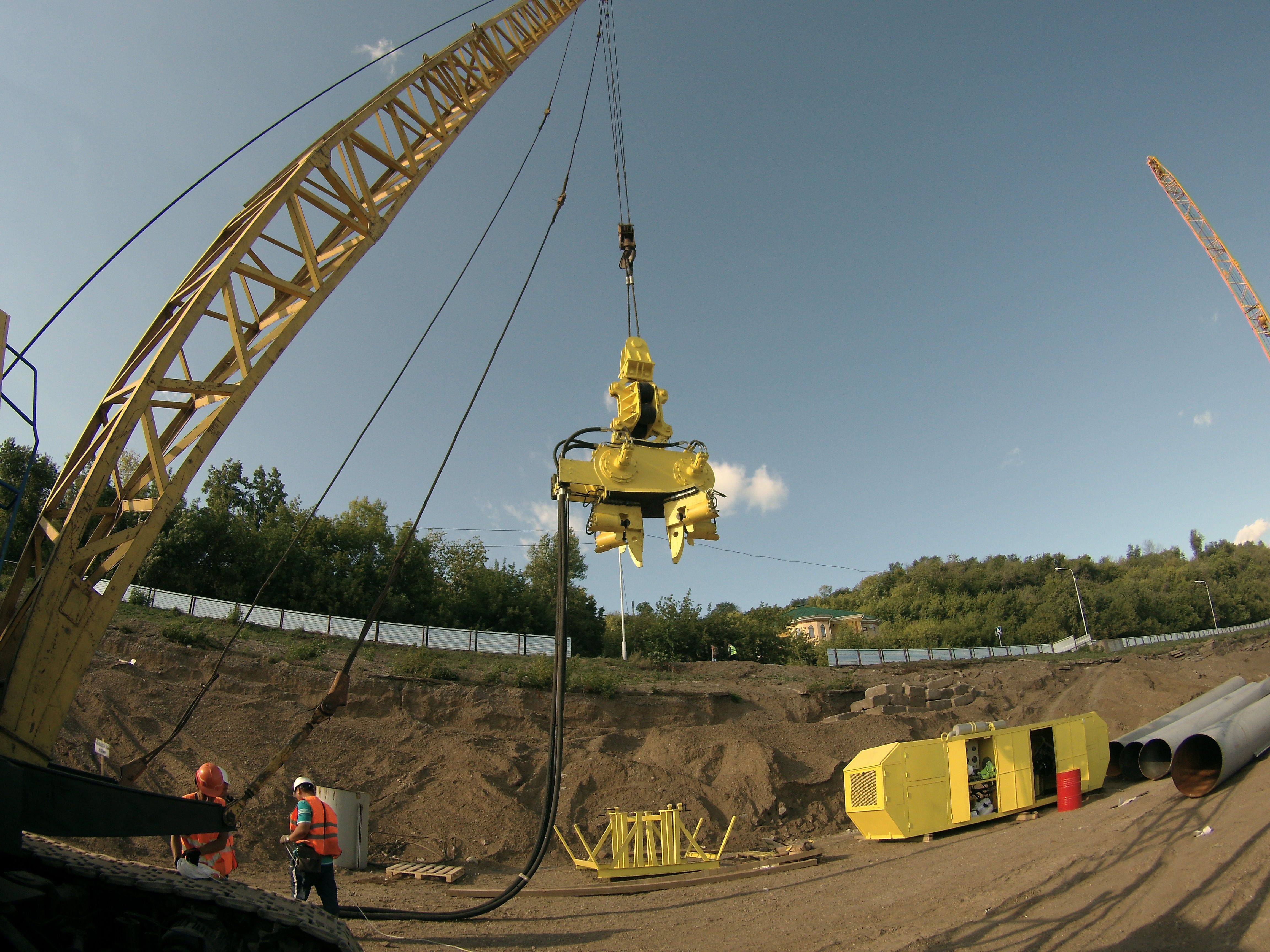Why Power Pack Selection Matters on the Jobsite
A hydraulic power pack is the heartbeat of your pile driving system. But when it's underpowered or mismatched, everything suffers.
If your hammer isn’t getting the right flow or pressure, it won’t drive piles effectively. Worse, it can overheat or damage seals — leading to downtime, missed deadlines, and costly repairs.
The right power pack keeps your pile driver running smoothly, day after day. In this guide, we’ll show you:
- What a hydraulic power pack does
- How to match it to your hammer and jobsite
- Key specs to look for and mistakes to avoid
- Basic maintenance tips for long-term reliability
This is everything you need to choose smart and drive efficiently.
What Is a Hydraulic Power Pack?
A hydraulic power pack is a self-contained system that produces pressurized fluid. That fluid powers your vibratory hammer, clamp, or any hydraulic-driven accessory.
It works behind the scenes — but it drives the entire operation.
In a pile driving setup, the power pack
- Sends oil flow to the hammer to create vibration
- Powers jaw clamps that hold the pile in place
- Supports accessories like dampers or rotators
Key Components Inside a Power Pack
- Hydraulic Pump – Pressurizes the oil
- Oil Reservoir – Stores and cools the hydraulic fluid
- Control Valves – Manage flow direction and rate
- Cooling System – Prevents overheating during continuous use
- Hoses and Fittings – Connect to the hammer and control panel
You’ll find them mounted in different ways depending on the site:
- Skid-Mounted – For crane platforms or marine barges
- Trailer-Mounted – Easy towing for mobile projects
- Stationary Units – Installed on custom rigs or floating docks
How Power Packs Work in a Pile Driving Setup
In pile driving, the power pack is the machine that sends hydraulic energy to every major component.
It delivers high-pressure oil to:
- Vibratory hammers (to create vibration and drive the pile)
- Jaw clamps (to grip and release the pile)
- Dampers and accessories (to reduce vibration and increase safety)
The operator uses the power pack’s control panel to:
- Adjust the vibration frequency
- Set the clamp pressure
- Control hammer lift and lower speed
Every function of your hammer depends on the quality and consistency of the hydraulic flow.
If the flow drops, your hammer slows. If the pressure spikes, components wear out faster.
Power Pack-to-Hammer Workflow (Simple Description)
- Power Pack turns on
- Hydraulic fluid is pressurized in the pump
- Oil flows through hoses to the hammer or clamp
- Control panel adjusts flow, pressure, and direction
- Fluid returns to reservoir through a cooling loop
Tip: Always confirm real-time compatibility between the hammer and power pack. Too much pressure can void warranties or damage seals.
Key Specs to Look For in a Power Pack
Picking the right unit means understanding a few key specs. Here's what matters most:
Flow Rate (L/min or GPM)
Flow rate determines how fast your hammer vibrates. Too low, and your hammer underperforms. Always match or slightly exceed the hammer’s minimum flow spec.
Operating Pressure (Bar or PSI)
This tells you how hard the system pushes fluid. If pressure is too low, jaws might not grip well. If too high, it can damage internal parts.
Reservoir Size
The tank stores and cycles hydraulic fluid. A larger reservoir helps keep oil cool and steady — especially on longer shifts or hotter days.
Cooling Capacity
Power packs generate heat fast. Look for models with fans, radiators, and flow-through cooling systems.
Power Source
- Diesel-powered units are ideal for remote or heavy-duty jobsites
- Electric-powered units work well in enclosed or emissions-sensitive areas
Pro Tip: Always check your hammer’s spec sheet first. Then pick a power pack that exceeds its minimum flow by 10–15%. This buffer prevents performance drops under load.
Matching the Power Pack to Your Equipment
Not every power pack fits every job. It’s important to match your unit to the type of machine you're powering, the hammer model, and any additional hydraulic attachments.
Mounting Configuration
- Crane-Mounted Setups Typically use skid-mounted or platform-mounted packs Best for heavy-duty or marine applications
- Excavator-Mounted Setups Often use smaller, trailer-style packs Designed for mobility and medium-scale projects
Hammer Compatibility
Every vibratory hammer model requires specific flow and pressure. Check the manual and spec sheet before finalizing your power pack.
Also ensure the pack
- Supports jaw clamp hydraulics
- Has ports or flow capacity for any additional tools (like dampers or rotators)
Power Pack Example Match Table
| Hammer Model | Required Flow (L/min) | Recommended Power Pack |
|---|---|---|
| VH-1100 | 220 | HPP-250 |
| VH-800 | 160 | HPP-180 |
Even if you're switching hammers between projects, using a power pack with adjustable flow settings can save time and reduce changeovers.
Common Mistakes When Selecting a Power Pack
Choosing the wrong unit can cost you in lost time, damaged components, and safety risks. Here are mistakes to avoid:
- Undersizing Flow or Pressure If your power pack can’t keep up, your hammer will lag, stall, or overheat.
- Overlooking Cooling Needs Long workdays generate heat fast. Without proper cooling, seals fail and fluid breaks down.
- Ignoring Clamp Compatibility Your power pack also powers the jaw clamps. Make sure it supports their hydraulic needs.
- Skipping Filtration and Safety Checks Dirty fluid and blocked filters can ruin internal seals. Look for packs with inline filters and pressure relief valves.
Maintenance Tips for Reliable Performance
Routine maintenance can extend the life of your power pack by years. Build these tasks into your weekly or monthly schedule:
- Change Hydraulic Oil and Filters Use OEM-approved fluid. Change filters every 250–500 hours depending on usage.
- Check Hoses, Valves, and Gauges Look for pressure drops, soft hoses, or fluid weeping. Small leaks can quickly turn into system failures.
- Keep Cooling Fins Clean Dust, mud, or jobsite debris can block airflow. A clogged radiator reduces performance fast.
- Watch for Overheating or Cavitation If you hear rattling or whining, shut down and inspect. Air bubbles in the line can cause serious damage.
Tip: Log all service work in a binder or digital tracker for warranty support and resale value.
When to Upgrade or Replace Your Power Pack
Even the most reliable power packs have a shelf life. Knowing when to replace or upgrade can prevent jobsite delays and protect your equipment investment.
Signs it’s time to move on
- Your Equipment Has Outgrown the System New hammers or clamps may require more flow or higher pressure than your current pack delivers.
- You’re Experiencing Increased Downtime Sluggish starts, lagging pressure, or overheating are signs your pack is underperforming.
- It Fails Current Safety or Emissions Standards Older diesel units may not meet Tier 4 or local compliance laws.
- Parts Are Hard to Find or Controls Are Outdated If you're relying on custom repairs or unavailable software, it may be more cost-effective to upgrade.
Explore Replacement Power Packs
Power Packs Drive More Than Just Fluid
A hydraulic power pack does more than push oil—it powers the entire pile driving process.
When properly selected and maintained, it keeps your hammer running efficiently, your clamps working reliably, and your timeline on track.
Don’t just buy by brand or horsepower. Match your power pack to your flow needs, site setup, and long-term plans.




